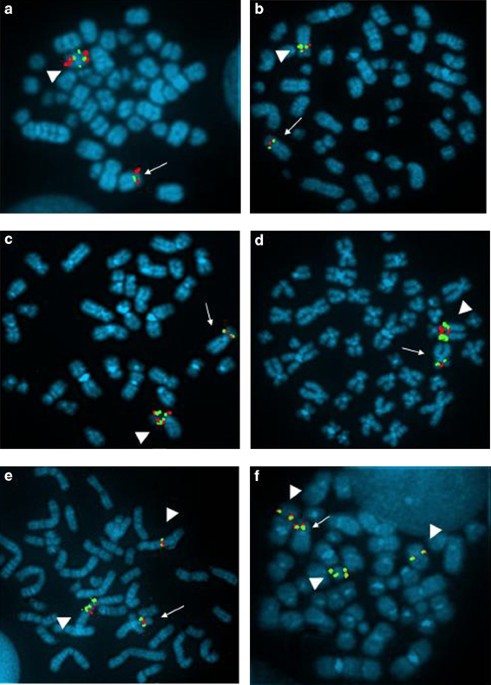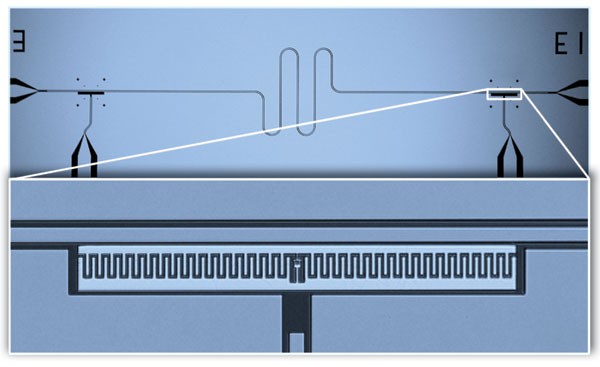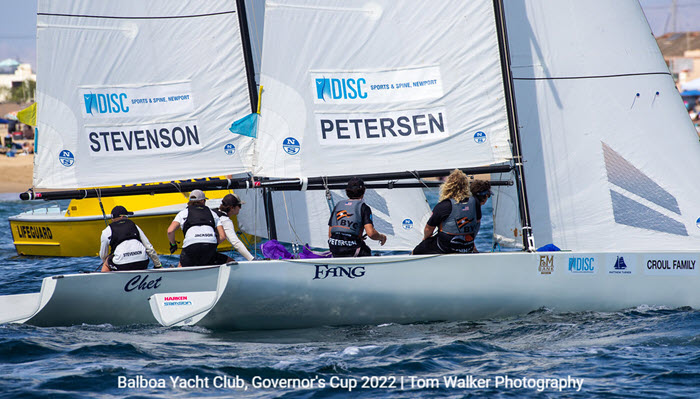
- Select a language for the TTS:
- UK English Female
- UK English Male
- US English Female
- US English Male
- Australian Female
- Australian Male
- Language selected: (auto detect) - EN
Play all audios:
ABSTRACT Fluorescence _in situ_ hybridization and comparative genomic hybridization characterized 6p rearrangements in eight primary and in 10 secondary myeloid disorders (including one
patient with Fanconi anemia) and found different molecular lesions in each group. In primary disorders, 6p abnormalities, isolated in six patients, were highly heterogeneous with different
breakpoints along the 6p arm. Reciprocal translocations were found in seven. In the 10 patients with secondary acute myeloid leukemia/myelodysplastic syndrome (AML/MDS), the short arm of
chromosome 6 was involved in unbalanced translocations in 7. The other three patients showed full or partial trisomy of the 6p arm, that is, i(6)(p10) (one patient) and dup(6)(p) (two
patients). In 5/7 patients with unbalanced translocations, DNA sequences were overrepresented at band 6p21 as either cryptic duplications (three patients) or cryptic low-copy gains (two
patients). In the eight patients with cytogenetic or cryptic 6p gains, we identified a common overrepresented region extending for 5–6 megabases from the TNF gene to the ETV-7 gene. 6p
abnormalities were isolated karyotype changes in four patients. Consequently, in secondary AML/MDS, we hypothesize that 6p gains are major pathogenetic events arising from acquired and/or
congenital genomic instability. Access through your institution Buy or subscribe This is a preview of subscription content, access via your institution ACCESS OPTIONS Access through your
institution Subscribe to this journal Receive 12 print issues and online access $259.00 per year only $21.58 per issue Learn more Buy this article * Purchase on SpringerLink * Instant access
to full article PDF Buy now Prices may be subject to local taxes which are calculated during checkout ADDITIONAL ACCESS OPTIONS: * Log in * Learn about institutional subscriptions * Read
our FAQs * Contact customer support SIMILAR CONTENT BEING VIEWED BY OTHERS HMGA2 OVEREXPRESSION WITH SPECIFIC CHROMOSOMAL ABNORMALITIES PREDOMINATE IN _CALR AND ASXL1_ MUTATED MYELOFIBROSIS
Article Open access 23 December 2024 MYELOID NEOPLASMS ASSOCIATED WITH T(3;12)(Q26.2;P13) ARE CLINICALLY AGGRESSIVE, SHOW MYELODYSPLASIA, AND FREQUENTLY HARBOR CHROMOSOME 7 ABNORMALITIES
Article 27 October 2020 CHROMOTHRIPSIS IS A FREQUENT EVENT AND UNDERLIES TYPICAL GENETIC CHANGES IN EARLY T-CELL PRECURSOR LYMPHOBLASTIC LEUKEMIA IN ADULTS Article Open access 16 August 2022
REFERENCES * Soekarman D, von Lindern M, Daenen S, de Jong B, Fonatch C, Heinze B _et al_. The translocation (6;9)(p23;q34) shows consistent rearrangement of two genes and defines a
myeloproliferative disorder with specific clinical features. _Blood_ 1992; 79: 2990–2997. CAS Google Scholar * Oyarzo MP, Lin P, Glassman A, Bueso-Ramos CE, Luthra R, Medeiros J . Acute
myeloid leukemia with t(6;9)(p23;q34) is associated with dysplasia and a high frequency of FLT3 mutations. _Hematopathology_ 2004; 122: 348–358. CAS Google Scholar * Akasaka T, Miura I,
Takahashi N, Akasaka H, Yonetani N, Ohno H _et al_. A recurring translocation, t(3;6)(q27;p21), in non-Hodgkin's lymphoma results in replacement of the 5′ regulatory region of BCL-6
with a novel H4 histone gene. _Cancer Res_ 1997; 57: 7–12. CAS PubMed Google Scholar * Chen W, Itoyama T, Chaganti RSK . Splicing factor SRP20 is a novel partner of BCL6 in a
t(3;6)(q27;p21) translocation in transformed follicular lymphoma. _Genes Chromosome Cancer_ 2001; 32: 281–284. Article CAS Google Scholar * Sonoki T, Harder L, Horsman DE, Karran L,
Taniguchi I, Willis TG _et al_. Cyclin D3 is a target of t(6;14)(p21.1;q32.3) of mature B-cell malignancies. _Blood_ 2001; 98: 2837–2844. Article CAS Google Scholar * Shaughnessy J,
Gabrera A, Qi Y, Brents L, Zhan F, Tian E _et al_. Cyclin D3 at 6p21 is dysregulated by recurrent chromosomal translocations to immunoglobulin loci in multiple myeloma. _Blood_ 2001; 98:
217–223. Article CAS Google Scholar * Iida S, Rao PH, Butler M, Corradini P, Boccadoro M, Klein B _et al_. Deregulation of MUM/IRF4 by chromosomal translocation in multiple myeloma. _Nat
Genet_ 1997; 17: 226–230. Article CAS Google Scholar * Johansson B, Mertens F, Heim S, Kristoffersson U, Mitelman F . Cytogeentics of secondary myelodysplasia (sMDS) and acute
nonlymphocytic leukemia (sANLL). _Eur J Haematol_ 1991; 47: 17–27. Article CAS Google Scholar * Mecucci C, Michaux J-L, Louwagie A, Boogaerts M, Van Den Berghe H . The short arm of
chromosome 6 is nonrandomly rearranged in secondary myelodysplastic syndromes. _Cancer Genet Cytogenet_ 1988; 31: 147–155. Article CAS Google Scholar * Huret JL, Schoenwald M, Brizard A,
Guilhot F, Vilmer E, Tanzer J . Chromosome 6p rearrangements appear to be secondary changes in various haematological malignancies. _Leukemia Res_ 1989; 13: 819–824. Article CAS Google
Scholar * Mancini M, Mecucci C, Cedrone M, Rondinelli MB, Aloe-Spiriti A, Alimena G . Unbalanced 6p translocation as primary karyotipic anomaly in secondary acute nonlymphocytic leukemia.
_Cancer Genet Cytogenet_ 1992; 60: 93–95. Article CAS Google Scholar * Jacob AK, Sreekantaiah C, Baer MR, Sandberg AA . Translocation (1;6)(p12;p23) in ANLL. _Cancer Genet Cytogenet_
1990; 45: 67–71. Article CAS Google Scholar * Michalovà K, Lemez P, Bartsch O, Brezinova J, Zemanova Z, Jelinek J _et al_. Derivative (6)t(1;6)(q22;p21) revealed in bone marrow cells by
FISH 9 months before diagnosis of acute T-lymphoblastic leukemia. _Cancer Genet Cytogenet_ 1996; 86: 131–135. Article Google Scholar * Mathew S, Head D, Rodriguez-Galindo C, Raimondi S .
Trisomy of the long arm of chromosome 1 resulting in a dicentric derivative (6)t(1;6) chromosome in a child with myelodysplastic syndrome following treatment for a primitive neuroectodermal
tumor. _Leukemia Lymphoma_ 2000; 37: 213–218. Article CAS Google Scholar * Mitelman F (ed) _An International System for Human Cytogenetic Nomenclature (ISCN)_. Basel: S Karger, 1995.
Google Scholar * Crescenzi B, La Starza R, Romoli S, Beacci D, Matteucci C, Barba G _et al_. Submicroscopic deletions in 5q− associated malignancies. _Haematologica_ 2004; 89: 281–285. CAS
PubMed Google Scholar * La Starza R, Specchia G, Cuneo A, Beacci D, Nozzoli C, Luciano L _et al_. The hypereosinophilic syndrome: fluorescence _in situ_ hybridization detects the
del(4)(q12)-FIP1L1/PDGFRA but not genomic rearrangements of other tyrosine kinases. _Haematologica_ 2005; 90: 596–601. CAS PubMed Google Scholar * Matteucci C, La Starza R, Crescenzi B,
Falzetti D, Romoli S, Emiliani C _et al_. Interpretation of the complex karyotype and identification of a new 6p amplicon by integrated comparative genomic hybridization and fluorescence _in
situ_ hybridization investigations on the U937-I cell line. _Cancer Genet Cytogenet_ 2002; 135: 28–34. Article CAS Google Scholar * Mauritzson N, Albin M, Rylander L, Billstrom R,
Ahlgren T, Mikoczy Z _et al_. Pooled analysis of clinical and cytogenetic features in treatment-related and _de novo_ adult acute myeloid leukemia and myelodysplastic syndromes based on a
consecutive series of 761 patients analyzed 1976–1993 and on 5098 unselected cases reported in the literature 1974–2001. _Leukemia_ 2002; 16: 2366–2378. Article CAS Google Scholar *
Sasaki MS, Tonomura A . A high susceptibility of Fanconi's anemia to chromosome breakage by DNA cross-linking agents. _Cancer Res_ 1973; 33: 1829–1836. CAS PubMed Google Scholar *
Cuthbert G, Thompson K, McCullough S, Watmore A, Dickinson H, Telford N _et al_. MLL amplification in acute leukaemia: a United Kingdom Cancer Cytogenetics Group (UKCCG) study. _Leukemia_
2000; 14: 1885–1891. Article CAS Google Scholar * Mathew S, Lorsbach RB, Shearer P, Sandlund JT, Raimondi SC . Double minute chromosomes and c-MYC amplification in a child with secondary
myelodysplastic syndrome after treatment for acute lymphoblastic leukemia. _Leukemia_ 2000; 14: 1314–1315. Article CAS Google Scholar * Bailey JA, Gu Z, Clark RA, Reinert K, Samonte RV,
Schwartz S _et al_. Recent segmental duplications in the human genome. _Science_ 2002; 297: 1003–1007. Article CAS Google Scholar * Stankiewicz P, Lupski JR . Genome architecture,
rearrangements and genomic disorders. _Trends Genet_ 2002; 18: 74–82. Article CAS Google Scholar * Ji Y, Eicher EE, Schwartz S, Nicholls RD . Structure of chromosomal duplicons and their
role in mediating human genomic disorders. _Genome Res_ 2000; 10: 597–610. Article CAS Google Scholar * Saglio G, Storlazzi CT, Giugliano E, Surace C, Anelli L, Rege-Cambrin G _et al_. A
76 Kb duplicon maps close to the BCR gene on chromosome 22 and the ABL gene on chromosome 9: possible involvement in the genesis of the philadelphia chromosome translocation. _Proc Natl Acad
Sci USA_ 2002; 99: 9882–9887. Article CAS Google Scholar * Giglio S, Broman KW, Matsumoto N, Calvari V, Gimelli G, Neumann T _et al_. Olfactory receptor-gene clusters, genomic-inversion
polymorphisms, and common chromosome rearrangements. _Am J Hum Genet_ 2001; 68: 874–883. Article CAS Google Scholar * Giglio S, Calvari V, gregato G, Gimelli G, Camanini S, Giorda R _et
al_. Heterozygous submicroscopic inversions involving olfactory receptor-gene clusters mediate the recurrent t(4;8)(p16;p23) translocation. _Am J Hum Genet_ 2002; 71: 276–285. Article CAS
Google Scholar * Rigaud G, Moore PS, Taruscio D, Scardoni M, Montresor M, Menestrina F _et al_. Alteration of chromosome arm 6p is characteristic of primary mediastinal B-cell lymphoma, as
identified by genome-wide allelotyping. _Genes Chromosomes Cancer_ 2001; 31: 191–195. Article CAS Google Scholar * Lau CC, Harris CP, Lu X-Y, Perloky L, Gogineni S, Chintagumpala M _et
al_. Frequent amplification and rearrangement of chromosomal bands 6p12p21 and 17p11.2 in osteosarcoma. _Genes Chromosomes Cancer_ 2004; 39: 11–21. Article Google Scholar * Bjorkqvist AM,
Tammilehto L, Nordling S, Nurminen M, Anttilla S, Mattson K _et al_. Comparison of DNA copy number changes in malignant mesothelioma, adenocarcinoma and large-cell anaplastic carcinoma of
the lung. _Br J Cancer_ 1998; 77: 260–269. Article CAS Google Scholar * Nessling M, Richter K, Schwaenen C, Roerig P, Wrobel G, Wessendorf S _et al_. Candidate genes in breast cancer
revealed by microarray-based comparative genomic hybridization of archived tissue. _Cancer Res_ 2005; 65: 439–447. CAS PubMed Google Scholar * Hauptmann S, Denkert C, Koch I, Petersen S,
Scluns K, Reles A _et al_. Genetic alterations in epithelial ovarian tumors analyzed by comparative genomic hybridization. _Hum Pathol_ 2002; 33: 632–641. Article CAS Google Scholar *
Chen D, Pajovic S, Duckett A, Brown VD, Squire JA, Gallie BL . Genomic amplification in retinoblastoma narrowed to 0.6 megabase on chromosome 6p containing a kinesin-like gene, RBKIN.
_Cancer Res_ 2002; 62: 967–971. CAS PubMed Google Scholar * Aalto Y, Eriksson L, Seregard S, Larsson O, Knuutila S . Concomitant loss of chromosome 3 and whole arm losses and gains of
chromosome 1, 6, or 8 in metastasizing primary uveal melanoma. _Invest Ophthalmol Vis Sci_ 2001; 42: 313–317. CAS PubMed Google Scholar * Tchinda J, Dijkhuizen T, van der Vlies P, Kok K,
Horst J . Translocations involving 6p22 in acute myeloid leukaemia at relapse: breakpoint characterization using microarray-based comparative genomic hybridization. _Br J Haematol_ 2004;
126: 495–500. Article CAS Google Scholar * Sornberger KS, Weremowicz S, Williams AJ, Quade BJ, Ligon AH, Pedeutour F _et al_. Expression of HMGIY in three uterine leiomyomata with complex
rearrangements of chromosome 6. _Cancer Genet Cytogenet_ 1999; 114: 9–16. Article CAS Google Scholar * Giraudier S, Chagraoui H, Komura E, Barnache S, Blanchet B, LeCouedic JP _et al_.
Overexpression of FKBP51 in idiopathic myelofibrosis regulates the growth factor independence of megakaryocyte progenitors. _Blood_ 2002; 100: 2932–2940. Article CAS Google Scholar *
Andersen MK, Christiansen DH, Kirchhoff M, Pedersen-Bjergaard J . Duplication or amplification of chromosome 11q23, including the unrearranged MLL gene, is a recurrent abnormality in
therapy-related MDS and AML, and is closely related to mutation of the TP53 gene and to previous therapy with alkylating agents. _Genes Chromosomes Cancer_ 2001; 31: 337–349. Article Google
Scholar * Andersen MK, Christiansen DH, Pedersen-Bjegaard J . Amplification or duplication of chromosome band 21q22 with multiple copies of the AML1 gene and mutation of the TP53 gene in
therapy-related MDS and AML. _Leukemia_ 2005; 19: 197–200. Article CAS Google Scholar Download references ACKNOWLEDGEMENTS PAC and BAC clones were obtained from the Roswell Park Cancer
Institute libraries RPCI-1, RPCI-3, RPCI-5 and RPCI-11, http://www.chori.org/BACPAC. RP5-1106L7 was kindly provided by Dr M Rocchi, University of Bari, Italy; cosmid Cah5 by Dr E Weiss,
Ludwig Maximilians Universität, München, Germany; and clones RP1-22O11, RP1-99J17, RP1-162J16, RP1-124L9 and RP3-329A5 by Dr I Ragoussis King's College, London, UK. We thank Dr
Geraldine Anne Boyd for assistance in preparing the manuscript. This work was supported by AIRC (Associazione Italiana Ricerca sul Cancro), CNR (Consiglio Nazionale delle Ricerche), MIUR
(Ministero per l’Istruzione, l’Università e la Ricerca Scientifica), Fondazione Cassa di Risparmio, Perugia, Associazione ‘Sergio Luciani’, Fabriano, AULL (Associazione Umbra contro le
Leucemie e Linfomi) Italy; and Belgian Programme of Interuniversity Poles of Attraction initiated by Belgian State, Prime Minister's Office, Science Policy Programming. BC is supported
by a grant from FIRC (Fondazione Italiana per la Ricerca sul Cancro). AUTHOR INFORMATION AUTHORS AND AFFILIATIONS * Hematology and Bone Marrow Transplantation Unit, University of Perugia,
Perugia, Italy R La Starza, C Matteucci, B Crescenzi, S Romoli, V Pierini, M F Martelli & C Mecucci * Servei de Hematologia, Hospital De La Santa Creu I Sant Pau, Barcelona, Spain A
Aventin * ‘Istituto Seragnoli’, Hospital S Orsola, Bologna, Italy N Testoni * Hematology Unit, University of Firenze, Firenze, Italy S Ciolli * Laboratory of Health Physics and Environmental
Hygiene, NCSR ‘Demokritos’, Athens, Greece C Sambani * Hematology, Hospital ‘S Camillo’ of Rome, Rome, Italy A Locasciulli * Hematology, Hospital ‘S Bortolo’ Vicenza, Vicenza, Italy E Di
Bona * Laboratoire de Biopathologie, Institut Paoli-Calmettes, INSERM U119, Marseille, France M Lafage-Pochitaloff * Center for Human Genetics and Flanders Interuniversity Institute for
Biotechnology (VIB), University of Leuven, Campus Gasthuisberg, Leuven, Belgium P Marynen Authors * R La Starza View author publications You can also search for this author inPubMed Google
Scholar * A Aventin View author publications You can also search for this author inPubMed Google Scholar * C Matteucci View author publications You can also search for this author inPubMed
Google Scholar * B Crescenzi View author publications You can also search for this author inPubMed Google Scholar * S Romoli View author publications You can also search for this author
inPubMed Google Scholar * N Testoni View author publications You can also search for this author inPubMed Google Scholar * V Pierini View author publications You can also search for this
author inPubMed Google Scholar * S Ciolli View author publications You can also search for this author inPubMed Google Scholar * C Sambani View author publications You can also search for
this author inPubMed Google Scholar * A Locasciulli View author publications You can also search for this author inPubMed Google Scholar * E Di Bona View author publications You can also
search for this author inPubMed Google Scholar * M Lafage-Pochitaloff View author publications You can also search for this author inPubMed Google Scholar * M F Martelli View author
publications You can also search for this author inPubMed Google Scholar * P Marynen View author publications You can also search for this author inPubMed Google Scholar * C Mecucci View
author publications You can also search for this author inPubMed Google Scholar CORRESPONDING AUTHOR Correspondence to C Mecucci. RIGHTS AND PERMISSIONS Reprints and permissions ABOUT THIS
ARTICLE CITE THIS ARTICLE La Starza, R., Aventin, A., Matteucci, C. _et al._ Genomic gain at 6p21: a new cryptic molecular rearrangement in secondary myelodysplastic syndrome and acute
myeloid leukemia. _Leukemia_ 20, 958–964 (2006). https://doi.org/10.1038/sj.leu.2404208 Download citation * Received: 11 October 2005 * Revised: 13 February 2006 * Accepted: 27 February 2006
* Published: 13 April 2006 * Issue Date: 01 June 2006 * DOI: https://doi.org/10.1038/sj.leu.2404208 SHARE THIS ARTICLE Anyone you share the following link with will be able to read this
content: Get shareable link Sorry, a shareable link is not currently available for this article. Copy to clipboard Provided by the Springer Nature SharedIt content-sharing initiative
KEYWORDS * primary and secondary myeloid malignancies * 6p rearrangements * genomic gain





